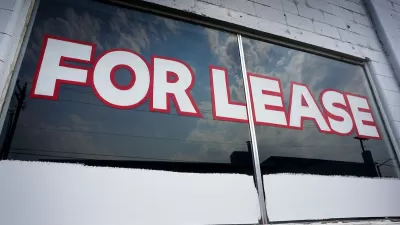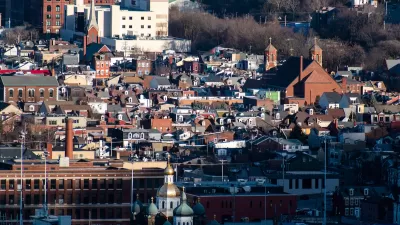Walla Walla's 2018 zoning reforms included adaptive reuse, reduced parking requirements, and more relaxed rules for accessory dwelling units.

When Walla Walla, Washington reformed its zoning code in 2018, the changes didn't get much attention, writes Stephen Fesler. Yet the city of 33,000 has quietly eliminated single-family zoning, among other changes such as "procedural processes, subdivision standards, street connectivity requirements, and adaptive reuse of non-residential buildings in residential zones," as well as "a wider variety of allowed uses in the lower density zone, a reduction of residential parking requirements, and more flexible accessory dwelling unit regulations."
"Generally speaking, the Neighborhood Residential zone allows for higher lot coverage, smaller setbacks, reduced parking requirements, and no minimum lot sizes, widths, or depths," amounting to standards that "allow for much more to be constructed on lots and legalize missing middle housing in areas where they were banned." The city's "approach with the Neighborhood Residential zone is particularly uncommon in Washington as it doesn’t have a defined density limit — something that most cities tend to use in lower-density residential zones. Instead, the zoning code simply relies upon other development standards like landscaping, height, setbacks, parking, and lot coverage to control how much can be built on a lot."
The simplicity and flexibility of this regulatory framework, Fesler says, is "something that many cities might do well to follow."
FULL STORY: Walla Walla: A Washington City Without Single-Family-Only Zoning

Planetizen Federal Action Tracker
A weekly monitor of how Trump’s orders and actions are impacting planners and planning in America.

Congressman Proposes Bill to Rename DC Metro “Trump Train”
The Make Autorail Great Again Act would withhold federal funding to the system until the Washington Metropolitan Area Transit Authority (WMATA), rebrands as the Washington Metropolitan Authority for Greater Access (WMAGA).

The Simple Legislative Tool Transforming Vacant Downtowns
In California, Michigan and Georgia, an easy win is bringing dollars — and delight — back to city centers.

The States Losing Rural Delivery Rooms at an Alarming Pace
In some states, as few as 9% of rural hospitals still deliver babies. As a result, rising pre-term births, no adequate pre-term care and "harrowing" close calls are a growing reality.

The Small South Asian Republic Going all in on EVs
Thanks to one simple policy change less than five years ago, 65% of new cars in this Himalayan country are now electric.

DC Backpedals on Bike Lane Protection, Swaps Barriers for Paint
Citing aesthetic concerns, the city is removing the concrete barriers and flexposts that once separated Arizona Avenue cyclists from motor vehicles.
Urban Design for Planners 1: Software Tools
This six-course series explores essential urban design concepts using open source software and equips planners with the tools they need to participate fully in the urban design process.
Planning for Universal Design
Learn the tools for implementing Universal Design in planning regulations.
Smith Gee Studio
City of Charlotte
City of Camden Redevelopment Agency
City of Astoria
Transportation Research & Education Center (TREC) at Portland State University
US High Speed Rail Association
City of Camden Redevelopment Agency
Municipality of Princeton (NJ)





























